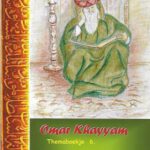This article explores the discursive role of intertextual references to medieval Persian poets, representatives of the Sufi tradition, in the work of Kader Abdolah, the internationally successful Dutch author of Iranian descent. Most references are authorial ones, that is, they do not refer to a particular text, but to the author of the text, sometimes in a fictionalized form, sometimes mentioning him as a historical figure. At first glance many of these references seem to be redundant elements of the narrative, merely responsible for creating an exoticism effect. Nevertheless, applying Bourdieu’s theoretical perspective on the formation of cultural capital, they can be assumed to fulfill an important strategic purpose. Firstly, they may allow Abdolah to position himself in the Dutch literary field as a writer-refugee, thus seeking connection with a tradition that is commonly positively received by a West-European readership. Secondly, they enhance prestige of the author, signaling Abdolah as a descendant of a classical literary tradition.

